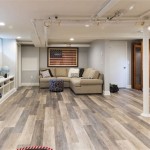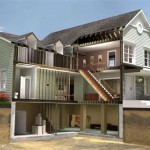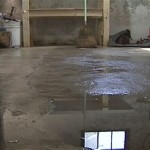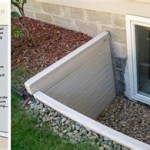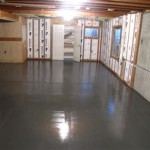Modern Basement Bar Designs: Crafting the Ultimate Entertainment Space
Transforming a basement into a stylish and functional bar area is a popular home improvement project. A well-designed basement bar can significantly enhance the value of a property and provide an ideal space for entertaining guests or relaxing after a long day. Modern basement bar designs emphasize clean lines, innovative materials, and efficient use of space, creating an inviting and sophisticated atmosphere. This article will explore key elements of modern basement bar design, focusing on layout considerations, material selection, and incorporating technological advancements.
Optimizing Layout and Space Utilization
The foundation of any successful basement bar design lies in a well-planned layout. The available space, existing structural elements, and intended usage patterns must be carefully considered. A common approach involves dividing the basement into distinct zones, such as a bar area, seating area, and potentially a game area. This zoning helps to create a functional flow and prevent overcrowding.
Counter space is paramount. The length and depth of the bar counter should be dictated by the available space but also by the intended functionality. Consider the need for ample preparation space, room for bar equipment (sinks, ice makers, refrigerators), and comfortable seating for patrons. A minimum of 24 inches of counter depth is generally recommended. The height of the bar can also influence the overall aesthetic. A standard bar height is approximately 42 inches, while a lower counter at table height can provide versatility for dining or lounging.
Sufficient aisle space is crucial for bartenders and guests alike. A minimum of 36 inches of clearance behind the bar is advisable for bartenders to move freely and access equipment. Similarly, ample space between seating and other fixtures is essential for comfortable movement. Narrow walkways can quickly become congested, detracting from the overall experience.
Storage is another key aspect of space utilization. Modern basement bar designs frequently incorporate creative storage solutions to maximize efficiency and minimize clutter. This can include custom cabinetry, open shelving, and wine racks. Under-counter storage is particularly valuable for storing glassware, liquor bottles, and other bar essentials. Consider incorporating pull-out shelves and drawers to optimize accessibility and visibility.
Lighting plays a crucial role in defining the atmosphere of the basement bar. Layered lighting, including ambient lighting, task lighting, and accent lighting, is recommended. Ambient lighting provides overall illumination, while task lighting focuses on specific areas such as the bar counter or preparation areas. Accent lighting can highlight decorative elements and create visual interest. Dimmers are often incorporated to allow for adjustable lighting levels to suit different moods and occasions.
Material Selection and Aesthetic Considerations
The materials used in a modern basement bar design significantly impact the overall aesthetic. Popular choices include natural stone, wood, metal, and glass. The selection of materials should reflect the desired style and also consider durability and maintenance requirements.
For countertops, options range from natural stone like granite and quartz to engineered materials such as concrete and solid surface. Granite and quartz offer durability and resistance to stains and scratches, making them ideal for high-traffic areas. Concrete countertops can provide a modern, industrial look, while solid surface materials offer seamless designs and a wide range of color options. The choice of countertop material should also consider its compatibility with the overall design scheme and the intended usage.
Bar fronts can be constructed from a variety of materials, including wood paneling, brick, stone veneer, or metal. Wood paneling can provide a warm and inviting atmosphere, while brick or stone veneer can add a rustic touch. Metal accents, such as stainless steel or brushed aluminum, can enhance the modern aesthetic. The choice of bar front material should complement the countertop material and the overall design style.
Flooring is another important consideration. Durable and water-resistant materials are essential for basement bars. Popular options include tile, concrete, luxury vinyl plank (LVP), and engineered hardwood. Tile offers excellent durability and water resistance, making it ideal for areas prone to spills. Concrete floors can be stained or polished to create a modern, industrial look. LVP offers a cost-effective and low-maintenance alternative to hardwood and tile. Engineered hardwood provides the aesthetic appeal of natural wood with enhanced stability and resistance to moisture.
Color palettes play a significant role in defining the mood and ambiance of the basement bar. Modern designs often incorporate neutral colors such as gray, beige, and white, accented with pops of color in furniture, artwork, or accessories. Darker colors can create a more intimate and sophisticated atmosphere, while lighter colors can brighten up the space and make it feel more open. The choice of color palette should reflect the desired style and the overall design concept.
Integrating Technology and Entertainment
Modern basement bar designs often incorporate technological advancements to enhance the entertainment experience. This can include integrated audio-visual systems, smart lighting controls, and automated bar equipment.
A well-designed audio-visual system is essential for creating an immersive entertainment environment. This can include a large-screen television for watching sports or movies, surround sound speakers for an enhanced audio experience, and a media server for storing and streaming content. Wiring should be concealed to maintain a clean and uncluttered aesthetic. Consider incorporating smart home technology to control the audio-visual system, lighting, and temperature from a single device.
Automated bar equipment can streamline operations and enhance efficiency. This can include automated drink dispensers, smart refrigerators with built-in inventory management, and self-cleaning ice makers. These technologies can help to reduce waste, improve consistency, and simplify bar tending tasks.
Smart lighting controls allow for customizable lighting scenes to suit different moods and occasions. This can include dimmers, color-changing LED lights, and automated lighting schedules. Smart lighting can be controlled via a smartphone app or voice command, providing convenient and flexible control over the lighting in the basement bar.
Connectivity is crucial in a modern basement bar. Ensure adequate Wi-Fi coverage to support streaming services, smart devices, and guest devices. Consider installing Ethernet ports for wired connections in areas where reliable internet access is essential. Power outlets should be strategically placed to accommodate electronic devices and bar equipment.
In conclusion, designing a modern basement bar requires careful planning and attention to detail. By optimizing the layout, selecting appropriate materials, and integrating technology, it's possible to transform an underutilized basement into a stunning and functional entertainment area. The result will be a valuable addition to the home, providing a space for relaxation, socializing, and creating lasting memories.

13 Basement Kitchen Bar Design Ideas Lily Ann Cabinets

8 Home Basement Bar Ideas Carla Bast Design

8 Home Basement Bar Ideas Carla Bast Design
Create The Perfect Basement Bar 5 Key Design Elements For Your Remodel

Before After Contemporary Basement Bar And Lounge Design

Bar And Kitchen Modern Basement Designs Design

15 Basement Bar Designs To Finish Off That Man Cave

27 Basement Bars That Bring Home The Good Times Decoist

Modern Basement Bar Ideas To Bring Home The Good Times Displate Blog

Clever Basement Bar Ideas Making Your Shine
Related Posts
